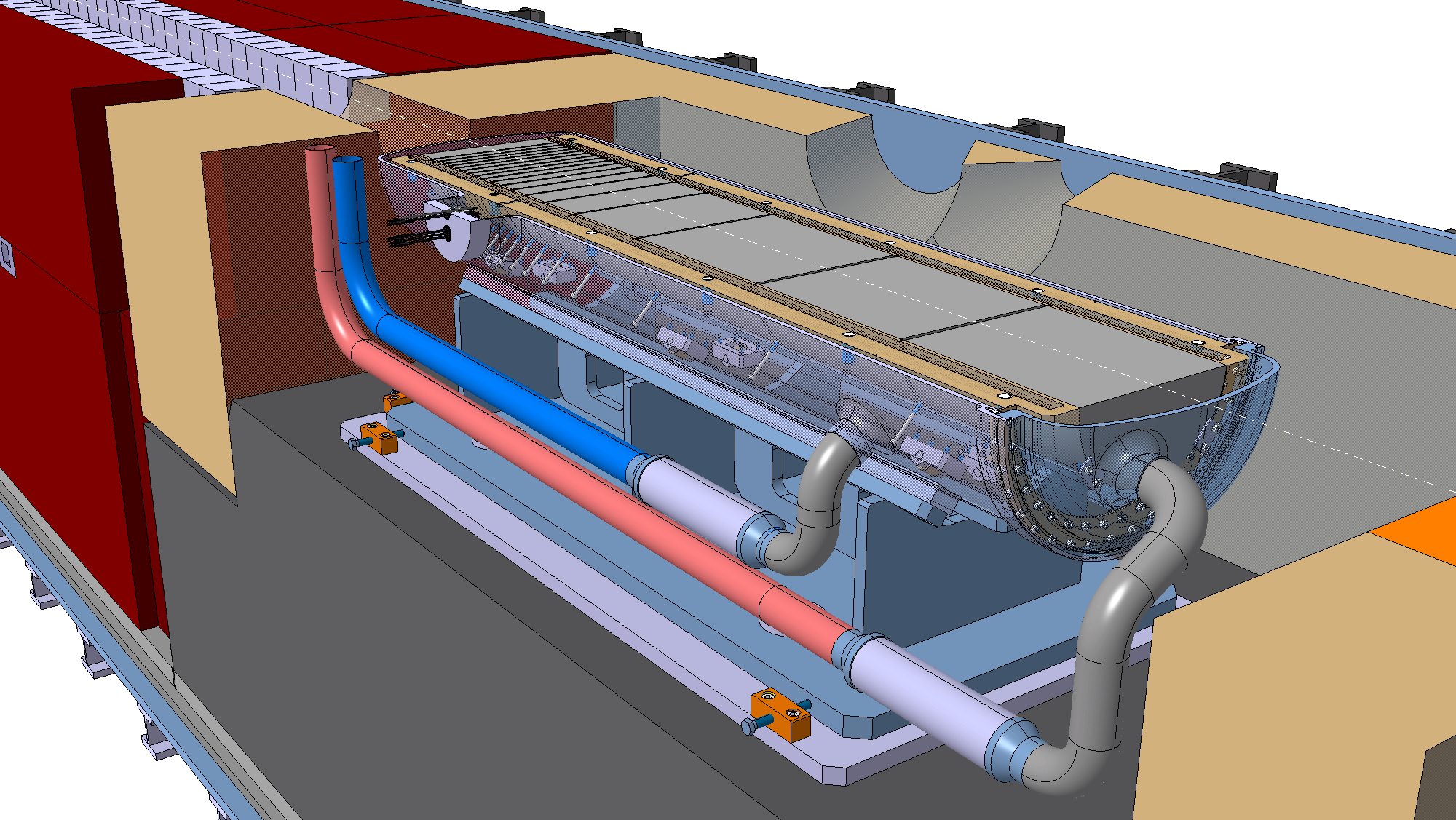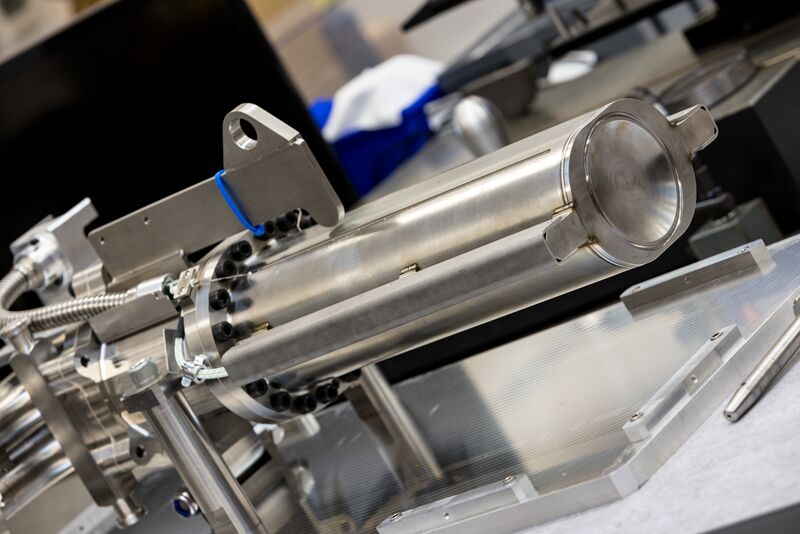The partnership brings together complementary expertise from both facilities to tackle the complex challenges in high-power target systems. These systems play a critical role in producing an array of particles and are key to both ISIS's neutron production capabilities and CERN's intensity frontier search for hidden particles.
"Our team, with the support and collaboration of many groups, is responsible for more than 250 beam intercepting devices in the CERN accelerator complex," explained Marco Calvani, Head of the Target, Collimators and Dumps Section at CERN. "One of the recently approved projects requires the development of a high-power target for a High Intensity Beam Dump Facility (BDF), which will serve the Search for Hidden Particles (SHiP) experiment."

A visualisation showing the high-power target for the High Intensity Beam Dump Facility at CERN. © CERN.
SHiP will look for the existence of 'hidden' particles, including hypothetical low mass Feebly Interacting Particles. These particles are thought to interact so weakly with matter that they have so far remained undetected, but they could explain some of the universe's biggest mysteries, such as dark matter, neutrino mass and matter-antimatter asymmetry.
One way to search for these 'hidden' particles is to collide a very intense and high energy proton beam, of the sort accelerated by CERN's Super Proton Synchrotron, with a production target similar to those used at ISIS to produce neutrons. At BDF/SHiP these collisions also produce a copious amount of tau neutrinos, another particle the SHiP experiment will study in detail.

The ISIS Neutron and Muon Source Target Station 1 (TS1) target assembly
A key part of the project is joint research into the properties of materials used in high-power target systems, such as tungsten, tantalum and niobium, and understanding how these are affected by operating conditions. The collaboration plans to use the neutron scattering instruments IMAT and Engin-X at ISIS to study stresses and strains within the target components and examine how these are impacted by different manufacturing techniques. Combining these experiments with the expertise at both facilities will give a fuller picture of how the targets perform and how the components can be further optimised.
"The Beam Dump Facility at CERN has a lot in common with the targets we use to generate neutrons at ISIS," commented Stephen Gallimore, Target Design Group Leader at ISIS. "That means our facilities share many of the same challenges and questions — from the materials and engineering involved in building the targets, to how we manage their operation, safety and environmental impact throughout the entire lifecycle.
“Not only will the knowledge gained over the course of the collaboration support the design of the Beam Dump Facility at CERN, but it will also be invaluable for target design and operation at ISIS. It will also help to inform aspects of the design of ISIS-II, which is being planned as the UK's next-generation neutron and muon source," Stephen added.
Exchange of knowledge is central to the agreement and the two facilities are planning joint workshops and seminars to share insights and expertise relating to the design, construction and operation of targets systems capable of withstanding intense proton beams.
"Sharing insights from the partnership between ISIS and CERN is a key part the agreement," said Marco. “We also want to ensure that the knowledge gained over the course of the collaboration is openly available to the wider scientific and engineering communities, where it will help to address critical knowledge gaps in many areas, particularly for other spallation neutron sources, high-power target facilities and ultimately also for fusion reactors, which often make use of similar materials and components."
